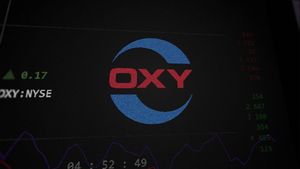
As October 2025 unfolds, global financial markets continue to grapple with a persistent state of volatility, driven by a confluence of economic shifts, evolving monetary policies, and geopolitical uncertainties. In this dynamic environment, investors are increasingly scrutinizing their strategies, with a particular focus on investment style rotation—the tactical shifting between different types of assets based on anticipated market leadership—and the enduring effectiveness of mutual funds as vehicles for managing these complex market movements. The ability to adapt to these stylistic shifts, whether through direct portfolio adjustments or judicious selection of investment funds, is proving critical for navigating the current landscape.
The immediate implications for investors are clear: a "buy and hold" approach, while foundational, may not be sufficient for optimizing returns or mitigating risks in a market prone to rapid re-evaluations of different company characteristics. The Federal Reserve's recent interest rate cut in September 2025, with more anticipated, signals a responsive monetary policy attempting to balance moderating inflation with a weakening labor market. This, combined with geopolitical tensions and the pervasive influence of Artificial Intelligence (AI) reshaping entire sectors, necessitates a nuanced understanding of where capital is flowing and which investment styles are poised to benefit or falter. For many, mutual funds represent a primary access point to these markets, making their performance and suitability for managing style rotation a paramount concern.
The Dance of Styles: Understanding Market Leadership Shifts
Investment style rotation is a sophisticated strategy where investors systematically reallocate their portfolios across different investment styles—typically defined by factors such as company size (e.g., small-cap, large-cap) and valuation (e.g., growth, value). The core premise is that various styles and sectors tend to outperform during distinct phases of the economic and market cycle. For instance, growth stocks, characterized by high earnings potential and often higher valuations, typically thrive during periods of robust economic expansion and low interest rates. Conversely, value stocks, which are often mature companies trading at lower multiples relative to their intrinsic worth, tend to demonstrate greater resilience during economic downturns or periods of rising interest rates, as their stable earnings and dividends become more attractive.
The current market environment in October 2025 provides ample triggers for such rotations. The Federal Reserve's recent pivot to an easing cycle, with a 25-basis-point rate cut in September and expectations for further reductions, is a significant catalyst. Historically, falling interest rates can favor growth-oriented companies by reducing their borrowing costs and increasing the present value of their future earnings. However, persistent inflation (hovering between 2.3%-3.0%), geopolitical uncertainties, and even a U.S. government shutdown in early October introduce counteracting forces that can quickly shift market sentiment. The ongoing AI investment surge, while a primary market driver, also creates a bifurcated market where AI beneficiaries experience rapid growth, potentially at the expense of other sectors, leading to sector-specific rotations.
While individual investors can attempt to implement style rotation by directly buying and selling specific stocks or Exchange Traded Funds (ETFs) aligned with different styles, mutual funds offer a more managed approach. However, research suggests a critical distinction: while investors can use style-specific mutual funds (e.g., a large-cap growth fund or a small-cap value fund) as building blocks for their own rotation strategy, actively managed mutual funds that internally attempt to time style rotations often struggle. Studies indicate that funds which frequently change their underlying investment styles tend to underperform those maintaining a consistent style exposure. This highlights the difficulty of market timing, even for professional managers, and suggests that investors might be better served by selecting funds with clear, consistent mandates and then rotating between those funds themselves, rather than relying on a single fund manager to execute rapid style shifts within one portfolio.
Companies on the Cusp: Winners and Losers in the Rotation Game
In a market defined by style rotation, the fortunes of public companies often depend less on their individual merits and more on the prevailing investment style or sector preference. As of October 2025, with the Federal Reserve initiating rate cuts and AI continuing its transformative impact, we can identify general characteristics of companies likely to win or lose.
Potential Winners:
- Growth-Orientated Technology Companies (NASDAQ: NDX): With anticipated rate cuts potentially lowering the cost of capital and increasing the present value of future earnings, high-growth technology firms, particularly those at the forefront of AI innovation, are well-positioned. Companies developing AI infrastructure, software, and applications are likely to see continued investment.
- Small-Cap Stocks (NYSE: IWM): Historically, small-cap companies tend to outperform larger counterparts during periods of economic recovery and falling interest rates, as they are often more sensitive to domestic economic conditions and have higher growth potential from a smaller base. The expected below-trend growth for the U.S. in 2025, combined with rate cuts, could create a favorable environment for selective small-cap exposure.
- Companies with Strong Balance Sheets and Free Cash Flow: In any volatile market, financially robust companies across all sectors are better equipped to weather economic headwinds and capitalize on opportunities. These companies often become "quality" plays, attracting investors seeking stability.
Potential Losers/Challengers:
- Highly Leveraged Companies: While rate cuts can reduce interest expenses, companies with excessive debt, particularly those in cyclical industries facing softening demand, may still struggle. Their ability to service debt could be tested if economic growth remains sluggish.
- "Bond Proxy" Stocks (Utilities, Consumer Staples): In an environment where bond yields are declining due to Fed rate cuts, the relative attractiveness of traditionally defensive, dividend-paying stocks (often considered "bond proxies") might diminish if investors seek higher growth opportunities elsewhere.
- Companies Unable to Adapt to AI Integration: Firms that fail to adopt or leverage AI technologies effectively risk losing competitive advantage, potentially seeing their market share and profitability eroded by more innovative peers. This applies across various industries, from manufacturing to services.
Mutual funds, depending on their investment mandate, will either benefit or suffer from these rotations. Growth-oriented funds, particularly those with significant exposure to technology and AI, may see strong performance. Conversely, value funds might face headwinds if the market broadly favors growth, though specific value opportunities can always emerge. Diversified funds with a blend of styles might offer more stability, but potentially at the cost of capturing peak performance from any single leading style.
Broader Significance: Trends, Ripples, and Precedents
The current market's emphasis on style rotation and the performance of mutual funds is not an isolated event but rather a reflection of several broader industry trends and economic shifts. The most prominent trend is the ongoing recalibration of asset valuations in response to a new interest rate paradigm. After a prolonged period of ultra-low rates, the recent hiking cycle and subsequent easing represent a significant adjustment, forcing investors to reassess the intrinsic value of different assets and the discount rates applied to future earnings. This directly fuels the growth vs. value debate, as each style reacts differently to changes in the cost of capital.
The pervasive influence of Artificial Intelligence (AI) also represents a structural shift, not just a cyclical one. AI's impact is creating a "two-speed" economy and market, where companies effectively leveraging AI are commanding premium valuations and driving market indices, while those lagging risk obsolescence. This creates significant ripple effects, compelling competitors and partners across industries to accelerate their AI adoption or risk being left behind. For mutual funds, this means a heightened focus on identifying true AI innovators versus speculative plays, and understanding the long-term implications for portfolio construction.
Regulatory or policy implications, while not directly tied to style rotation itself, do influence the broader environment in which mutual funds operate. Discussions around data privacy, AI ethics, and antitrust concerns could introduce new regulatory frameworks that impact the growth trajectories of major tech players, potentially influencing sector leadership. Historically, such periods of technological disruption and monetary policy shifts often lead to significant market leadership changes. For example, the dot-com bubble burst in the early 2000s saw a dramatic rotation from speculative growth stocks to more established value companies. Similarly, the post-2008 financial crisis era saw a prolonged period of growth stock outperformance, fueled by quantitative easing. Comparing these precedents, the current environment feels like a blend, with technological innovation driving growth but economic uncertainties and monetary policy shifts keeping value and quality in contention.
What Comes Next: Navigating the Future Market Landscape
Looking ahead, the investment landscape in the short-term and long-term will likely remain characterized by dynamic shifts, requiring investors to maintain vigilance and adaptability. In the short term (the next 6-12 months), the market will be closely watching the Federal Reserve's actions, particularly regarding the pace and extent of further interest rate cuts. Each reduction could provide tailwinds for growth stocks, but persistent inflation or any signs of economic stagnation could temper enthusiasm and potentially favor more defensive or value-oriented plays. The resolution of geopolitical tensions and the impact of the U.S. government shutdown will also play a role in shaping near-term market sentiment.
Strategically, investors may need to embrace a more active approach to portfolio management, even if it means rotating between broadly diversified mutual funds or ETFs rather than individual stocks. This could involve tactical overweighting of styles or sectors that appear poised for leadership, while maintaining a core diversified portfolio. For mutual fund managers, this means an increased emphasis on robust fundamental analysis to identify companies with sustainable competitive advantages, particularly in the AI space, and a disciplined approach to valuation.
Market opportunities are likely to emerge from several fronts. The continued innovation in AI and related technologies (e.g., semiconductors, cloud computing) presents significant growth potential. Additionally, sectors that have been undervalued due to higher interest rates might see a resurgence as borrowing costs decline. Conversely, challenges include the risk of overvaluation in certain high-flying growth segments and the potential for unexpected economic downturns. Scenarios could range from a "soft landing" where inflation moderates and growth stabilizes, leading to a broad market rally, to a more challenging environment where economic growth falters, necessitating a retreat to defensive assets. The "Goldilocks" scenario of sustained growth with contained inflation and gradual rate cuts would be ideal for most risk assets.
A Comprehensive Wrap-Up: Staying Agile in Evolving Markets
In summary, the financial markets of October 2025 present a complex tapestry of volatility, driven by shifting monetary policies, geopolitical uncertainties, and the transformative power of Artificial Intelligence. For investors, understanding and managing investment style rotation is paramount. While mutual funds offer a convenient avenue for diversification and professional management, their effectiveness in navigating these shifts hinges on both the fund's specific mandate and the investor's strategic allocation among different fund types. The key takeaway is that a static investment approach is unlikely to yield optimal results in this dynamic environment.
Moving forward, the market will likely continue its tug-of-war between growth and value, with periods of leadership for each, influenced by economic data, corporate earnings, and global events. The ongoing AI revolution will undoubtedly continue to shape sector performance and company valuations, creating both immense opportunities and potential pitfalls for those unable to adapt. Investors should recognize that while active management in mutual funds offers the potential for outperformance in volatile markets, often due to skilled stock picking and risk management, passive index funds frequently outperform over the long term, especially when considering lower fees. A blended approach, utilizing both low-cost index funds for core exposure and carefully selected active funds for tactical plays, might be a prudent strategy.
What investors should watch for in the coming months includes further pronouncements from the Federal Reserve, particularly regarding future rate cut expectations, and inflation data. The earnings reports of major technology companies will provide crucial insights into the real-world impact and monetization of AI. Geopolitical developments, especially those impacting global trade and supply chains, will also bear close monitoring. Ultimately, success in this environment will belong to those who remain agile, informed, and disciplined, capable of adjusting their investment strategies to align with the market's evolving leadership.
This content is intended for informational purposes only and is not financial advice







